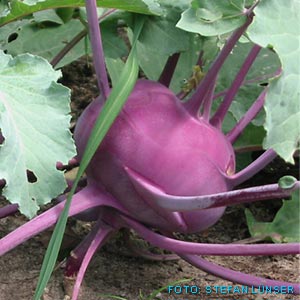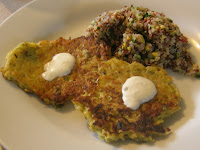 Thanksgiving really snuck up on me this year. Until about a week before the holiday, we had no idea who in the family would be hosting, or who would be coming. As it turns out, most of us went our separate ways to various branches of the family, and we hosted my in-laws. It was a small, very manageable feast for seven (including the baby). I must say, while there is something to be said for large holiday meals, they can also be very stressful, and this meal was not so. It came together easily, from start to finish, in the course of 3 days.
Thanksgiving really snuck up on me this year. Until about a week before the holiday, we had no idea who in the family would be hosting, or who would be coming. As it turns out, most of us went our separate ways to various branches of the family, and we hosted my in-laws. It was a small, very manageable feast for seven (including the baby). I must say, while there is something to be said for large holiday meals, they can also be very stressful, and this meal was not so. It came together easily, from start to finish, in the course of 3 days.Although Christmas dinner doesn't happen in my house, I can imagine that this stuffing might be a very welcome addition to such a holiday feast, especially at one that includes those of vegetarian persuasion. So, perhaps it isn't too late to post it. It also happens that one of the key ingredients, ghee, also makes this recipe quite appropriate to enter into the Pure Indian Foods Ghee Recipe Contest. And that is another reason to post it. Incidentally, (and this endorsement is not at all required for the sake of the contest), this is the brand of ghee that I use. It is locally made (to me), it is made from grass-fed, organic milk, and it saves me the trouble of making my own ghee. It also happens to be OK for my milk-allergic son to eat. Apparently, ghee, being absent of milk solids, is also lacking lactose and casein. Let me stress that I am not and cannot give medical advice on this (or any) subject, and I do not recommend that anyone with a dairy allergy or intolerance eat ghee without consulting his/her health care provider first. For us, it was very freeing to discover that we are able to use ghee, instead of oil, to cook and flavor the foods we eat. That buttery aroma was well-missed in this household!
Apple Hazelnut Stuffing
4 cups whole grain fresh bread (wheat, spelt, rice), cubed
1/3 cup hazelnuts, chopped
1/2 large onion, chopped
3 cloves garlic, minced
1/4 cup ghee + 3 Tbsps.
1 stalk celery, chopped
1 apple, peeled & chopped
3 Tbsps. fresh sage, chopped
1 - 1 1/2 cups low-sodium veggie stock (depending on how moist you like your stuffing)
salt & pepper, to taste
Preheat oven to 425F. If the bread is fresh, toast the bread in the oven on a dry cookie sheet for 10 minutes. If it's stale, skip this step. Toast the hazelnuts on a dry cookie sheet for 5 minutes. Transfer the bread cubes and hazelnuts to a large bowl. Reduce oven temperature to 350F.
In a saute pan, melt the 1/4 cup of ghee over medium heat. Sweat the onions and garlic in the ghee until softened, about 10 minutes. Add the celery, sauteing an additional 5 minutes. Season the onion mixture with salt and pepper. Pour the onion mixture over the bread cubes and hazelnuts, and toss well. To the bowl, add the apples and sage, tossing once again.
Warm the veggie stock, and add in small increments to the bread mixture, tossing after each addition, until you reach the desired consistency (the oven will dry it out somewhat, so aim for a bit more moistness than is your preference). Season with salt & pepper.
Using 1 Tbsp. of ghee, grease a large casserole. Transfer the stuffing mixture to the prepared casserole. Using the remaining 2 Tbsps. of ghee, dot the top of the stuffing with small fingerfuls. Bake, uncovered, for 1 hour.
Serves 8-10.










 1
1 



